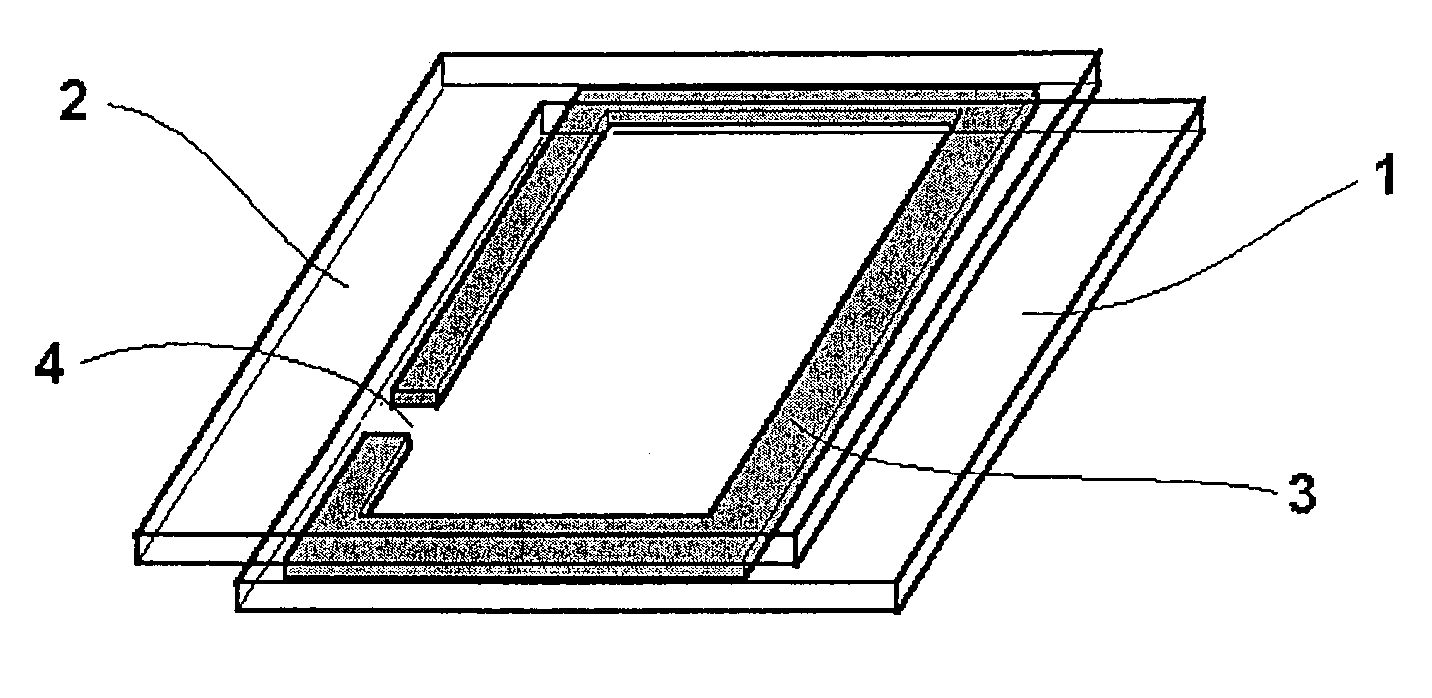Electrochromic device
a technology of electrochromic devices and electrodes, applied in the direction of luminescent compositions, instruments, photosensitive materials, etc., can solve the problems of not being able to operate in transmitted light, not being able to allow a large number of switching cycles, and devices that are not particularly stabl
- Summary
- Abstract
- Description
- Claims
- Application Information
AI Technical Summary
Problems solved by technology
Method used
Image
Examples
example 1
[0279]9.6 g of 3-phenyl-1-bromopropane were added dropwise over the course of 45 min to 15.0 g of 4,4′-bipyridyl in 90 ml of toluene at 70° C. The mixture was stirred for 24 h at reflux temperature, cooled down and the solid was filtered off with suction. The solid was stirred in 90 ml of toluene for 4 h at reflux temperature, cooled down, filtered off with suction and washed with toluene. Drying in vacuo gave 14.3 g (85% of theory) 4-(4-pyridyl)-1-(3-phenylpropyl)pyridinium bromide.
[0280]2.5 g of the above product were stirred with 0.7 g of 1,3-dibromopropane in 35 ml of butyrolactone with the addition of 0.1 g of tetrabutylammonium iodide at 70° C. for 48 h. The mixture was cooled down, and the solid was filtered off with suction, washed with a little butyrolactone and toluene and dried in vacuo. 3.0 g (94% of theory) of the electrochromic substance of the formula (CCCIa) were obtained as a beige powder.
[0281]
[0282]1H NMR ([D6]-DMSO): δ=2.36 (quint.), 2.71 (t), 2.83 (quint.), 4.78...
example 2
[0288]A cell was constructed as shown in FIG. 1. To this end, two glass plates 1 and 2 coated on one surface with ITO were used.
[0289]A mixture of 97% of photocuring DELO-Katiobond® 4594 epoxy adhesive (DELO Industrieklebstoffe, Landsberg) and 3% of glass beads with a diameter of 200 μm were applied in a ring shape 3 to the ITO-coated side of glass plate 1 in such a way that a 2 mm wide opening 4 was left. Glass plate 2 was then placed on the adhesive bead in such a way that the ITO layers of the two plates 1 and 2 were facing one another and a geometry as shown in FIG. 1 was formed. The adhesive was cured by exposure for 10 minutes to daylight in the vicinity of a window and then for 20 minutes at 105° C. without exposure to light.
[0290]A dish was filled under a nitrogen atmosphere with a solution which was 0.02 molar with respect to the electrochromic compound of the formula
[0291]
0.0025 molar with respect to the electrochromic compound of the formula
[0292]
and 0.005 molar with resp...
example 3
[0298]A cell was constructed as described in Example 2 except that the electrochromic compound of the formula (CCCII) was used in a concentration of 0.01 mol.
[0299]Application of a voltage of 1.2 V to the two plates 1 and 2 caused the cell rapidly to turn black. Switching off the voltage and short-circuiting the contacts caused the colour rapidly to disappear again. 100 000 switching cycles of this type were conducted without any change in the switching behaviour.
[0300]In the coloured state, the cell displayed absorption maxima at 399 nm, 466 nm, 550 nm, 606 nm, 665 nm and 738 nm having absorbencies of 5.36, 2.06, 1.78, 1.82, 1.25 and 0.81, respectively.
PUM
 Login to View More
Login to View More Abstract
Description
Claims
Application Information
 Login to View More
Login to View More - R&D
- Intellectual Property
- Life Sciences
- Materials
- Tech Scout
- Unparalleled Data Quality
- Higher Quality Content
- 60% Fewer Hallucinations
Browse by: Latest US Patents, China's latest patents, Technical Efficacy Thesaurus, Application Domain, Technology Topic, Popular Technical Reports.
© 2025 PatSnap. All rights reserved.Legal|Privacy policy|Modern Slavery Act Transparency Statement|Sitemap|About US| Contact US: help@patsnap.com



